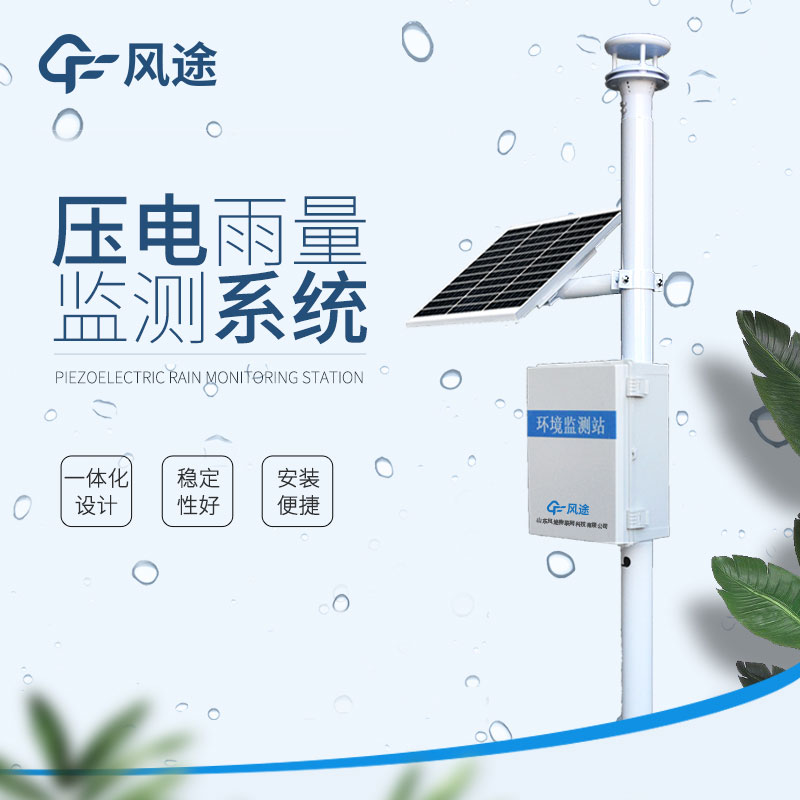Shandong Fengtu IOT Technology Co., Ltd
Sales Manager:Ms. Emily Wang
Cel,Whatsapp,Wechat:+86 15898932201
Email:info@fengtutec.com
Add:No. 155 Optoelectronic Industry Accelerator, Gaoxin District, Weifang, Shandong, China

Sales Manager:Ms. Emily Wang
Cel,Whatsapp,Wechat:+86 15898932201
Email:info@fengtutec.com
Add:No. 155 Optoelectronic Industry Accelerator, Gaoxin District, Weifang, Shandong, China
time:2023-06-09 17:04:46 source:Weather Station viewed:1077 time
Instruments for measuring rainfall:
Rainfall measurement is a method used to measure the amount of rainfall and is usually achieved using a rain gauge. A rain gauge is a special container that measures precisely the amount of rainwater collected over a certain period of time. Typically, a rain gauge can measure the number of millimetres of precipitation over an area of 1 square metre. Rainfall measurements are important for research and applications in the fields of meteorology, hydrology as well as agriculture.
Rainfall data can be used for many things, as follows:
1. Water resource management: Rainfall data can be used to calculate rainfall and runoff in a watershed, providing basic data for water resource management.
2. Flood warning: Rainfall data can be used to monitor rainfall and provide timely warning of natural disasters such as floods.
3. Agricultural production: rainfall data can be used to develop agricultural production plans and irrigation plans to ensure that crops receive sufficient water.
4. Building construction: Rainfall data can be used to predict the impact of rain on building construction and to take appropriate measures in advance.
5. Weather forecasting: rainfall data is one of the most important data for weather forecasting and can be used to predict future weather conditions.
6. Scientific research: Rainfall data can be used for scientific research in areas such as climate change research, hydrology research and environmental research.
Overall, rainfall data has important applications in a variety of fields and is a very important aspect of meteorological monitoring.
So how do you measure rainfall data? There are many instruments on the market for measuring rainfall, such as rainfall monitoring equipment, rain gauges and so on. A rainfall monitoring station is a type of meteorological observatory that is specifically designed to measure and record rainfall data. They are usually installed in open fields or high places to allow more accurate measurement of rainfall. A rainfall monitoring station usually consists of a rain gauge, a recorder and a memory. Some advanced stations may be equipped with other additional instruments such as thermometers, hygrometers, anemometers etc. to provide a more comprehensive monitoring of meteorological conditions. The data can be used for research into precipitation patterns, flood forecasting, drought monitoring and water resource management.

Buoy water quality automatic monitoring station through on-site testing and real-time online monitoring, to help river management departments and users to grasp timely and accurate water quality information, for users to reflect real-time changes in water quality, management of water quality to prov...
Water Level Monitoring Station is a technological facility that uses low-power intelligent sensing devices as its core to continuously monitor the water levels of rivers and lakes,This system provides decision support for flood control, disaster reduction, and water resource management by accurately collecting hydrological data....
The principle of ultrasonic wind speed and direction meter is to use ultrasonic time difference method to achieve the purpose of wind speed and direction measurement. The speed of sound propagation in the air is iterated with the speed of airflow in the wind direction. If the ultrasonic propagation...
Moisture describes the level of moisture in the soil, which reflects the actual water content in the soil and is critical to plant growth. There are three key indicators of soil moisture: the maximum saturated water content of the soil, which is the degree to which the soil can become completely sat...